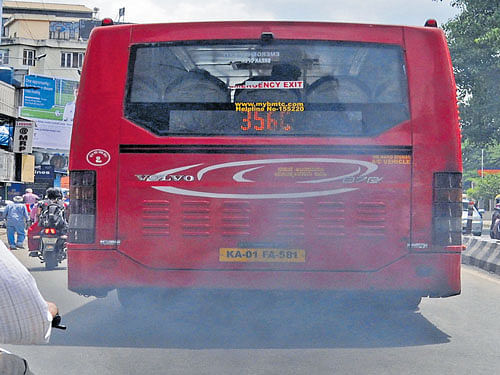
A World Health Organisation (WHO) report puts Bengaluru at the 38th place in a list of 122 polluted Indian cities in 2012. However, a report drawn up by the Karnataka State Pollution Control Board shows that the pollution levels are much more.
A KSPCB official said that factors contributing to pollution have changed and thus the ranking.
Bengaluru is one of the top five polluted cities in the country after Delhi, Mumbai, Lucknow and Chennai, he said. This is due to the increase in road dust, construction activities and vehicular pollution. The most polluted areas of the city are Central Silk Board, Whitefield, Mysuru Road and the Karnataka Housing Board industrial area.
According to KSPCB data, pollution levels in certain areas of Bengaluru were 207% higher than normal till February. The figures for March were no different.
KSPCB data shows that the levels of Respirable Suspended Particulate Matter (RSPM), which includes PM10 and PM2.5 (minute dust particles more harmful to lungs) were 207% higher than normal at Graphite India in Whitefield (annual average level being 184), 97% higher than normal at KHB Industrial area (118), 115% at Peenya industrial area (129), 82% at Yeshwantpur police station (109), 105% at AMCO Batteries on Mysuru Road (123), 183% at Central Silk Board (170), 130% at DTDC House on Victoria Road (138), 22% at Kajisonnenanahalli (73), 70% at Victoria Hospital (102), 112% at Nimhans (127), 68% at city railway station (100.5) and 7% at SG Halli (64). The standard RSPM level is 60 microgram per cubic metre.
KSPCB secretary Shanthappa said that the sulphur dioxide and carbon dioxide levels are low, which have ensured that the city’s ranking is lower compared to other Indian and global cities. However, the RSPM levels are high due to road dust and mud which are not cleared by civic agencies. There is also a need to control vehicular pollution.